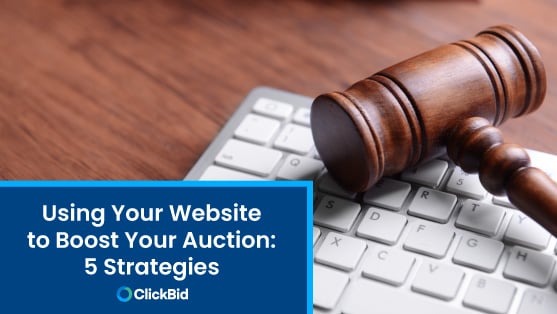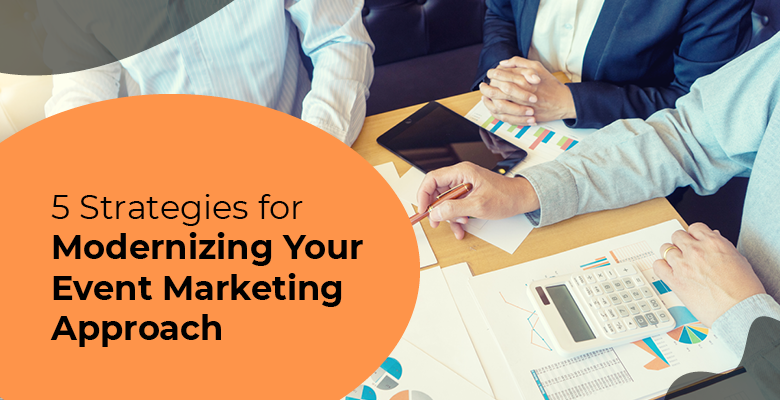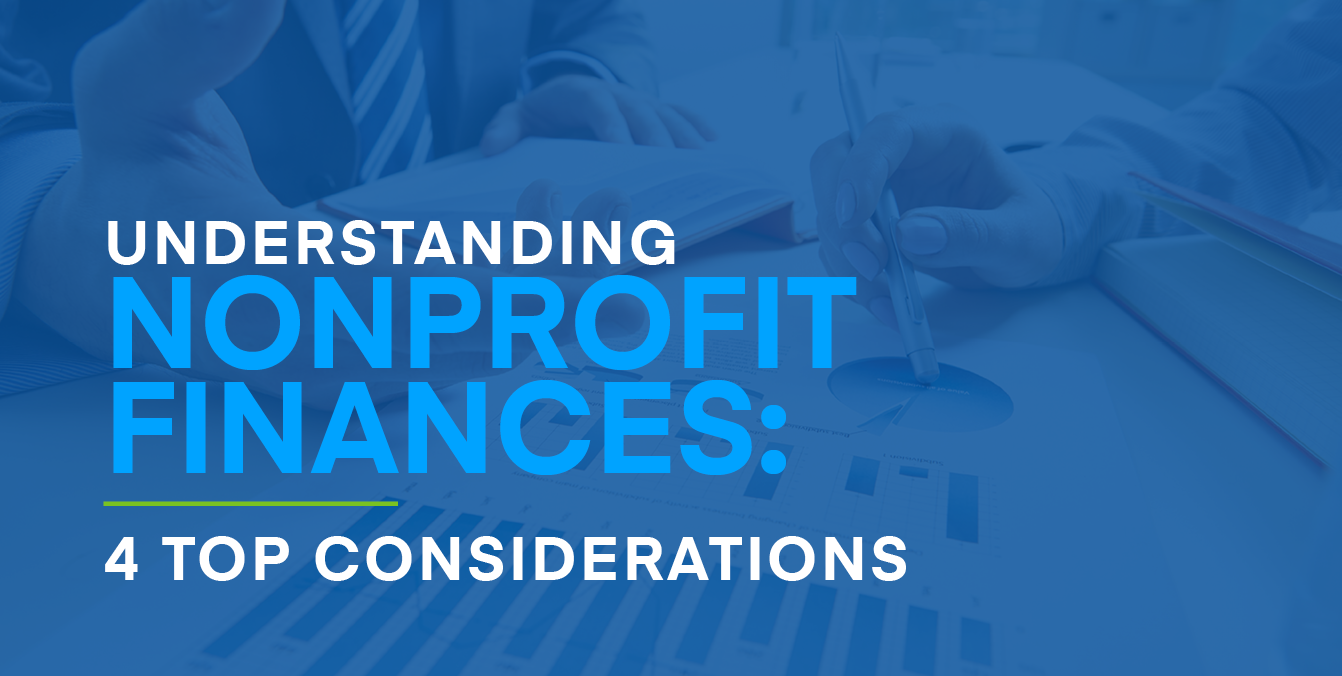
5 Strategies for Modernizing Your Event Marketing Approach
January 11, 2022
For many years, nonprofit event marketing was relatively simple and unchanging. Event planners would design posters, flyers, emails, and other mass marketing content and send these materials out to a wide audience, hoping they would be enough to encourage individuals to attend.
But nowadays, event marketing isn’t so straightforward. Even before the global pandemic hit, nonprofit marketing was evolving, with new targeting techniques and sophisticated audience engagement strategies. And with the COVID-19 pandemic came new virtual marketing considerations that forced nonprofit professionals to think outside the box when it came to engaging with supporters remotely.
If you’re looking to update your event marketing strategy based on current best practices and modern techniques, you’ve come to the right place. In this quick guide, we’ll review five effective strategies to modernize your event marketing efforts, including:
- Embrace data marketing.
- Try out innovative geomarketing techniques.
- Leverage the power of your website.
- Create a unique strategy for marketing your virtual events.
- Test out influencer marketing.
Keep in mind that modernizing your marketing efforts doesn’t mean solely focusing on your online marketing strategy. You can incorporate modern marketing techniques such as audience segmentation, data marketing, and geotargeting into your traditional offline marketing campaigns as well. Read on for a closer look at how you can modernize each facet of your marketing approach.
1. Embrace data marketing.
Your organization collects a hefty amount of data on a daily basis, including supporter information gathered from internal sources such as your online donation page, email marketing platform, and social media channels. Combine this information with valuable external datasets to pursue a comprehensive data marketing strategy.
A data-driven approach allows you to establish your event marketing campaign on facts, rather than hunches. Plus, you can use your data to learn more about your target audience and connect with them in ways that resonate. Organizations that pursue data-driven marketing reap the benefits, as it delivers a 5-8x return on investment.
AccuData’s data marketing guide describes the four elements you’ll need to build a strong data marketing strategy ahead of your upcoming event:
- The data itself. You can gather data from your organization’s internal supporter database and a variety of third-party data sources.
- A goal. For instance, are you looking to connect with a younger Gen Z or Millennial audience to engage them in your upcoming event? Are you hoping to reach a local audience? Set an objective to define success for your campaign.
- A plan for assessing and applying your data. Identify patterns within your supporter database and group supporters into segments based on shared characteristics. Put these insights into action by creating marketing materials that appeal to each segment.
- Metrics to measure success. Use data tracking tools to measure your marketing progress and determine the most and least effective strategies.
Data marketing modernizes your marketing approach by ensuring that you’re speaking directly to your target audience, rather than a more generalized group of potential supporters.
If you need a helping hand to kickstart your data marketing efforts, consider working with a database marketing agency. These firms can offer the experience and expertise needed to assess your data situation and help you start using your data to carry out marketing campaigns.
2. Try out innovative geomarketing techniques.
Take your data marketing efforts to the next level with geofencing marketing techniques. Geofencing marketing involves using location data to connect with your target audience digitally.
This practice allows you to connect with a local audience more effectively, break into new markets, and reach prospective event attendees with multiple touchpoints.
There are a few different variations of geomarketing, including:
- Geofencing: This technique uses GPS data to identify specific homes and businesses within a target market. Geofencing technology allows you to identify all of the devices within just these specific addresses and serve digital ads to them.
- Mobile geofencing: Mobile geofencing uses GPS data to identify mobile devices within a certain geographic boundary, such as an event venue or conference center, and deliver relevant digital ads while individuals are on location.
- Geoframing: This technique uses coordinate data to identify the location of an event. Then, you can serve ads to individuals who attended the event.
Let’s say you’re looking to engage a local audience to attend your upcoming event. Using geofencing technology, you can identify all of the homes within a local neighborhood or all of the apartments in a complex to promote your event. You can even target only the households of those most likely to support your organization!
This is another technique that will likely require the support of a data marketing firm to complete your goals successfully. But once you have an established strategy for conducting geomarketing, you can start connecting with a specialized audience and serving them ads that are relevant to their interests.
3. Leverage the power of your website.
Your website is your organization’s digital information hub for your supporters. It can also be a powerful event marketing tool.
Whether you’re hosting an auction, gala, or fundraising 5K, you can use your website to promote these exciting opportunities, especially when your site is optimized for search engines. Follow SEO best practices such as using locally-popular keywords in your content, optimizing your images and metadata, offering valuable educational content, and more.
You can also create an event microsite to promote your major or annual events. According to Kanopi’s guide to charity microsites, a microsite is a single webpage or cluster of pages that function as a unique, distinct website from your main nonprofit site. These mini-websites offer plenty of benefits because they:
- Are easily shareable.
- Offer unique, specialized content that helps audience members learn more about your events.
- Allow you to be more flexible with your website design and test out new features, design elements, and multimedia formats before implementing them on your main website.
- Can support and enrich your other event marketing efforts, such as your email and social media campaigns.
Ensure your microsite is designed with clean, uniform branding that reflects your nonprofit’s or event’s branding. Also, make sure your microsite facilitates simple, fast event registrations by using buttons to point visitors to your sign-up form.
4. Create a unique strategy for marketing your virtual events.
Even before the COVID-19 pandemic hit, virtual nonprofit events were on the rise. That’s because these experiences offer convenience for supporters, allowing them to tune in from home. Plus, they allow nonprofits to connect with a wider geographic audience.
Ultimately, virtual (and hybrid) events are here to stay, so it’s important to incorporate virtual event marketing strategies into your overall event marketing approach. You should use a multichannel marketing strategy with a combination of digital and traditional marketing platforms to reach different segments of your target audience. Market your virtual event with:
- Email drip campaigns
- Registration incentives
- Targeted social media ads
- Phone outreach
- Event ambassadors
- Direct mail
- Supporter segmentation
Let’s say you’re developing a strategy to promote your virtual gala. With a multichannel approach, your older supporters might be more receptive to your direct mail marketing campaign, while your younger audience may prefer connecting with you on social media.
With a thoughtful and dedicated strategy, you ensure that you give your virtual events as much publicity as your in-person experiences, boosting virtual attendance rates.
5. Test out influencer marketing.
You’re undoubtedly familiar with the concept of social media influencers. These are the Instagram and TikTok stars promoting hair care, vitamins, clothing brands, and other items to their tens of thousands of followers.
However, you might not have realized you can use influencer marketing to support your nonprofit’s event marketing campaigns. The term “influencer” doesn’t just refer to social media celebrities — an influencer can be any member of your organization or community whose opinions carry weight.
Deploy local influencers to act as ambassadors to help promote your events. Look for individuals who are involved with your organization or who are influential in your larger community. These influencers may include:
- Board members
- Staff members
- Volunteers
- Long-time donors
- Local leaders
- Local business owners
Influencer marketing is so effective because of the concept of social proof. This term refers to a social phenomenon where individuals will imitate what they see as socially acceptable behavior. In this instance, your event ambassadors will use their social clout to encourage others in the community to follow their lead and participate in your events.
All in all, influencer marketing is an effective way to add a peer-to-peer marketing approach to your overall event marketing strategy.
Modern marketing strategies like the ones we’ve reviewed in this guide are designed to ensure your nonprofit receives a greater return on its investment using strategies that directly reach your target audience.
Marketing strategies continue to evolve, so it’s important to keep your event advertising approach flexible and open to change. Review other nonprofits’ digital and traditional marketing strategies to get an idea of how other organizations are successfully engaging with their audiences. Good luck!
Get The Latest Updates
Subscribe To Our Monthly Newsletter
No spam, notifications only about new products, updates.
Become a subscriber
Subscribe to our blog and get the latest updates straight to your inbox.


